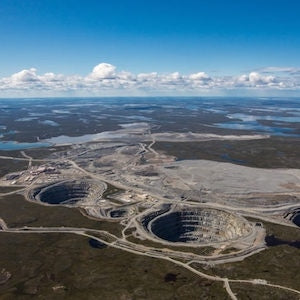
Natural diamonds, Everything you Need to Know
Share
The Timeless Beauty of Natural Diamonds: Nature’s Masterpiece
Natural diamonds have captivated humanity for centuries, symbolizing love, luxury, and endurance. Formed deep within the Earth over billions of years, these gems are as fascinating as they are beautiful. In this blog post, we’ll explore how natural diamonds are created, their unique qualities, and why they remain a cherished choice for jewelry and investment.
How Are Natural Diamonds Formed?
Natural diamonds are born under extraordinary conditions deep in the Earth’s mantle, about 100–150 miles below the surface. Here’s how they come to be:
• Extreme Conditions: Diamonds form when carbon atoms are subjected to intense pressure (around 5–6 gigapascals) and temperatures (1,200–2,000°C). These conditions, found in the Earth’s mantle, cause carbon to crystallize into the hardest known mineral.
• Geological Journey: Volcanic eruptions, through kimberlite or lamproite pipes, carry diamonds closer to the surface. These pipes act like elevators, transporting diamonds from the mantle to mineable depths.
• Timeframe: The process takes 1–3.5 billion years, making natural diamonds some of the oldest objects you can hold.
What Makes Natural Diamonds Unique?
Natural diamonds are prized for their rarity and individuality, defined by the 4Cs:
• Carat: The weight of the diamond, with larger stones being rarer and more valuable.
• Cut: The precision of the cut determines how a diamond reflects light, creating its sparkle.
• Clarity: Natural diamonds often have inclusions (internal flaws) or blemishes, which make each stone unique.
• Color: Most diamonds appear colorless, but some have hues like yellow, blue, or pink, adding to their allure.
Each natural diamond carries a story of its geological journey, with imperfections that reflect its natural origins. Certified gemological labs, like GIA or AGS, evaluate these qualities to ensure authenticity and value.
Why Choose Natural Diamonds?
Natural diamonds hold a special place in the world of jewelry and beyond:
• Timeless Appeal: Their rarity and ancient origins make them a symbol of enduring love, perfect for engagement rings and heirlooms.
• Investment Value: High-quality natural diamonds can appreciate over time, especially rare colored stones.
• Emotional Connection: Owning a piece of Earth’s history, formed billions of years ago, adds a unique emotional resonance.
However, natural diamonds come with considerations. Mining can have environmental and ethical impacts, though many jewelers now source from responsible mines adhering to standards like the Kimberley Process to prevent conflict diamonds.
Natural vs. Lab-Grown Diamonds
Unlike lab-grown diamonds, which are created in weeks using HPHT or CVD methods, natural diamonds are a product of nature’s slow, unpredictable process. While lab-grown options are more affordable and eco-friendly, natural diamonds appeal to those who value their rarity and geological heritage. The choice depends on your priorities—timeless tradition or modern sustainability.
Caring for Your Natural Diamond
To keep your diamond sparkling:
• Clean it regularly with mild soap and a soft brush.
• Store it separately to avoid scratches.
• Have it inspected annually by a jeweler to ensure settings are secure.
The Future of Natural Diamonds
As ethical concerns grow, the diamond industry is evolving. Responsible mining practices and transparency in sourcing are becoming standard. Technologies like blockchain are also used to trace a diamond’s journey from mine to market, ensuring ethical integrity.
Conclusion
Natural diamonds are more than just gems—they’re a testament to Earth’s incredible power and beauty. Their billion-year journey from the planet’s depths to your jewelry box makes them a truly special choice. Whether you’re buying a diamond for love, legacy, or investment, understanding their origins adds to their magic.
Have a favorite diamond story or curious about choosing the perfect stone? Drop a comment below, and let’s keep the sparkle alive!
